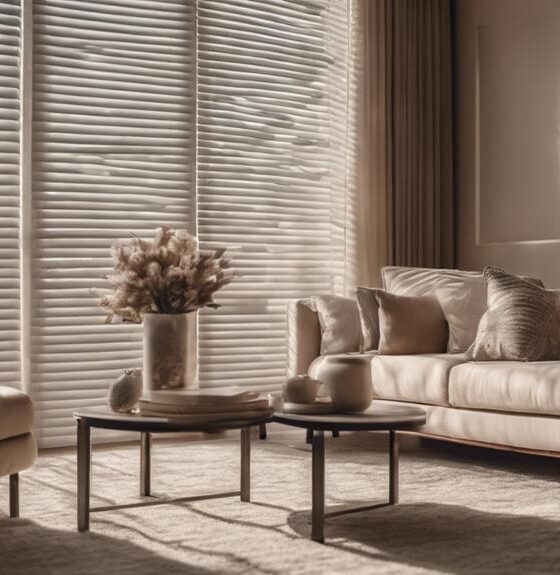Decor
Learn to Set a Beautiful Easter Brunch Table in 5 Steps
Unlock the secrets to a stunning Easter brunch table setting with these 5 simple yet impactful steps that will leave your guests in awe.
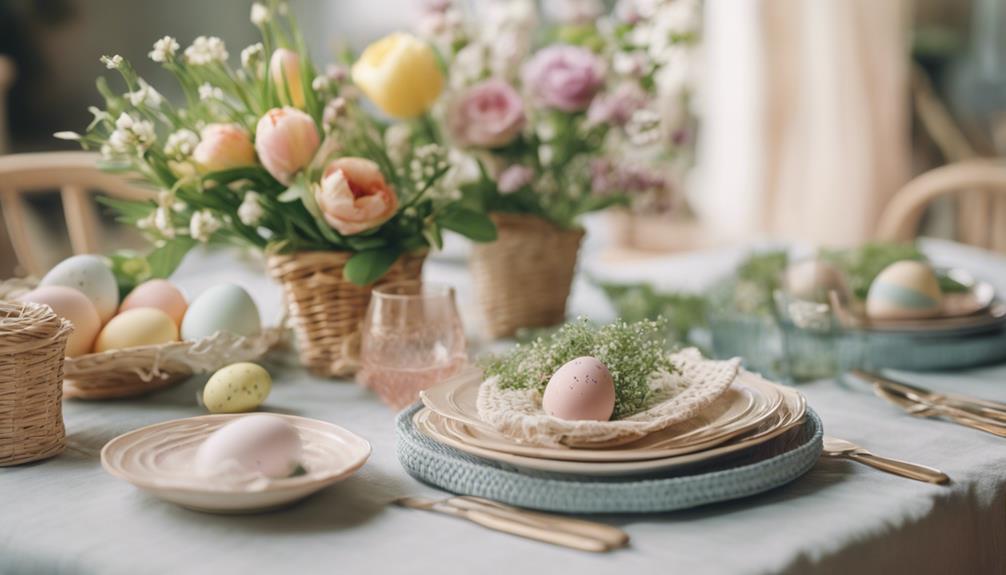
We're excited to share our Easter brunch table setting ideas with you! To get started, we plan in advance to guarantee a stress-free celebration. Next, we create a visually appealing buffet with a variety of dishes and decorative elements. Then, we add flair with fresh flowers, bunny-themed decor, and more. Our delicious spread features classic brunch dishes, seasonal favorites, and DIY stations. Finally, we add finishing touches with decorative napkin rings, personalized place cards, and colorful candies. With these 5 steps, we're one step closer to creating an unforgettable Easter brunch experience – and there's more to explore to make it a reality.
Key Takeaways
• Plan ahead to reduce chaos and stress by mapping out the buffet layout and visualizing the flow of the brunch.
• Create a visually appealing buffet by arranging plates first, offering protein choices, and using varied serving dishes and decorative elements.
• Incorporate decorative elements with flair, such as fresh blooms, bunny-themed items, and Easter-themed place cards or mini baskets as favors.
• Prepare a delicious and varied spread, including classic brunch dishes, seasonal favorites, and a DIY station for pancakes, waffles, or omelets.
• Add finishing touches with flair, such as fresh flowers, decorative napkin rings, and colorful Easter candies at each setting.
Plan Ahead for a Stress-Free Brunch
As we start planning our Easter brunch, we quickly realize that preparing ahead of time is key to reducing chaos and stress, making hosting a gathering much more manageable. By preparing ahead, we can guarantee a smooth and enjoyable experience for our guests.
A vital aspect of planning ahead is mapping out the buffet layout in advance. This helps us visualize the flow of the brunch and guarantees that our Easter brunch table is set up efficiently. We can designate specific spots for each dish, creating a seamless serving experience for our guests.
Additionally, planning the buffet layout allows us to create a traffic flow for guests to follow while serving themselves, making the overall dining experience more enjoyable. By taking the time to prepare ahead, we can focus on enjoying the celebration with our loved ones, rather than stressing about the details.
Create a Visually Appealing Buffet
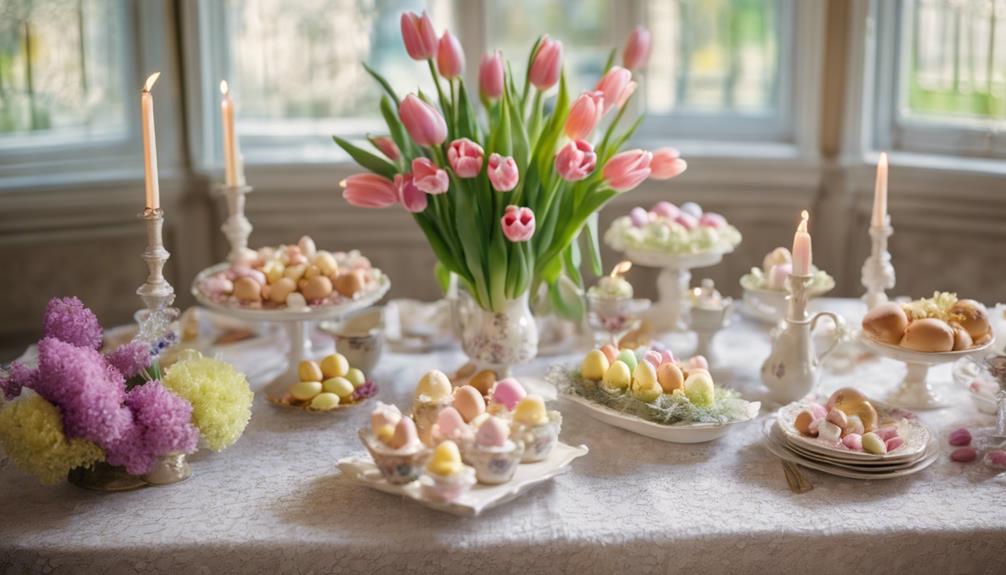
We'll create a visually appealing buffet by starting with the basics and adding some creative touches. To begin, we'll arrange plates at the starting point of the buffet to set the flow of the meal.
Offering a variety of protein choices, such as smoked ham and smoked salmon, will cater to different tastes and dietary needs. To add visual interest, we'll use a mix of serving dishes in different shapes and sizes to create a beautiful Easter table.
For our Easter Brunch Ideas, we'll present asparagus and Easter eggs in separate, easily accessible containers, making it convenient for our guests to serve themselves. To elevate the visual appeal of the buffet, we'll serve shrimp on a decorative scallop plate.
Add Decorative Elements With Flair

As event planners, it's understood that Easter tables require a touch of whimsy and playfulness. We begin by incorporating fresh blooms, like tulips or daffodils, in pastel hues to evoke the feeling of a spring garden. Adding bunny plates, egg-shaped napkin holders, and floral or bunny-patterned table linens helps create a cohesive look.
To enhance the springtime theme, we consider incorporating nests, bird figurines, or mini potted plants into the tablescape. Subtle touches like Easter-themed place cards or mini baskets as favors for guests add a personal touch.
While styling our Easter tables, we keep in mind to include pastel colors and seasonal elements throughout the table setting, following our trusty tips and tricks. With these decorative elements, our Easter brunch table is transformed into a beautiful and inviting space that's sure to delight our guests.
Prepare a Delicious and Varied Spread
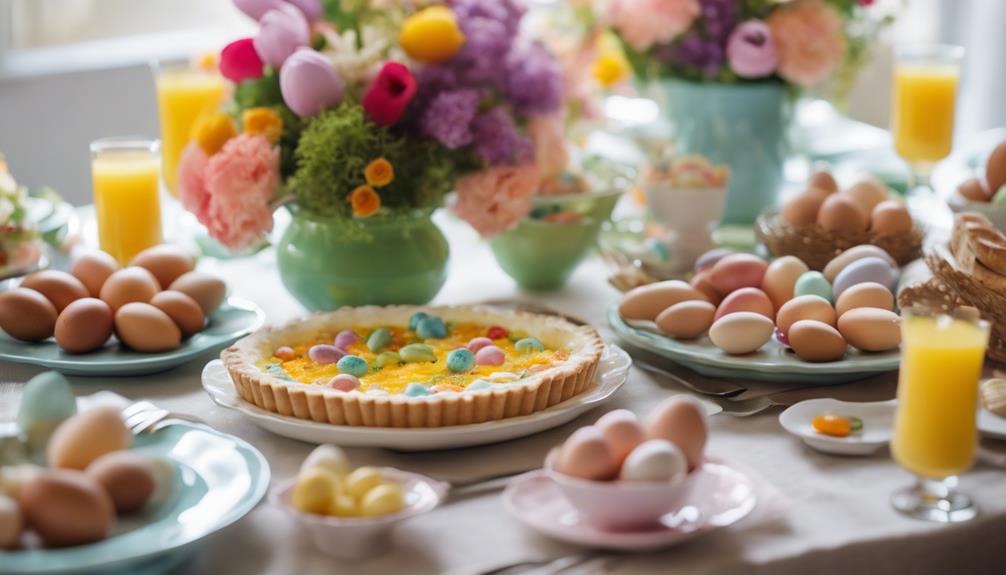
What's the secret to crafting a truly unforgettable Easter brunch spread – one that will leave our guests excited to return for seconds?
This year, we're determined to create an Easy Easter Brunch that's not only delicious but also visually appealing. To achieve this, we'll focus on preparing a varied spread that caters to different tastes and preferences.
Here are some essential elements to include:
Classic brunch dishes** like quiche, French toast, and eggs Benedict
Seasonal favorites** such as asparagus, strawberries, and honey-glazed ham to give our brunch a taste of spring
A selection of salads**, both green and fruit-based, to cater to different tastes
A variety of bread** or pastries to complement the savory dishes
A DIY station for pancakes, waffles**, or omelets to add a fun interactive element
Add Finishing Touches With Flair

As we've carefully curated our Easter brunch spread, it's time to focus on the finer details that will elevate our table setting from ordinary to extraordinary.
Now, let's add those finishing touches that will make our gathering truly special.
We'll start by incorporating fresh flowers or greenery in small vases or jars as a simple yet elegant finishing touch.
Next, we'll use decorative napkin rings or fold napkins creatively to add a personalized flair to each place setting.
To add a pop of color and whimsy, we'll place a small bowl of colorful Easter candies or mini chocolate eggs at each setting.
Consider adding a small name card or personalized place card to make each guest feel special and welcome.
Finally, we'll use decorative chargers or placemats in coordinating colors to enhance the overall look of the table setting.
With these thoughtful details, our Easter brunch table will be transformed into a stunning and inviting space that's sure to delight our guests.
Frequently Asked Questions
How to Set up an Easter Brunch Table?
When we set up an Easter brunch table, we start by choosing a color scheme or theme that fits our style. Then, we select table linens and essential items like plates, flatware, and glassware that match our theme.
Next, we add decorative elements like centerpieces and candles to create a festive ambiance. Finally, we personalize each place setting with name cards or small favors to make our guests feel special.
With these steps, we create a beautiful and inviting Easter brunch table that's sure to impress!
What Do You Decorate a Buffet Table for Easter?
The art of Easter decorating! When it comes to decorating a buffet table for Easter, we think pastel colors, fresh flowers, and adorable bunny-themed tableware set the tone.
We add a touch of spring with nests, bird figurines, or mini potted plants, and top it off with a table runner or tablecloth featuring floral or bunny patterns.
The result? A charming and festive Easter brunch spread that's sure to delight our guests!
Conclusion
As we step back to admire our handiwork, our Easter brunch table transforms into a vibrant masterpiece, akin to a blooming garden.
The carefully curated elements blend harmoniously, weaving a tapestry of warmth and hospitality.
With every detail thoughtfully considered, our table setting is now a celebration of the joy of gathering, where loved ones can come together to savor the beauty of the season.
- About the Author
- Latest Posts
Introducing Ron, the home decor aficionado at ByRetreat, whose passion for creating beautiful and inviting spaces is at the heart of his work. With his deep knowledge of home decor and his innate sense of style, Ron brings a wealth of expertise and a keen eye for detail to the ByRetreat team.
Ron’s love for home decor goes beyond aesthetics; he understands that our surroundings play a significant role in our overall well-being and productivity. With this in mind, Ron is dedicated to transforming remote workspaces into havens of comfort, functionality, and beauty.
Alfresco
What Is Alfresco in Art? Understanding the Style!
Marvel at the timeless art technique of alfresco, where masterpieces are painted on fresh plaster, bonding pigments for everlasting beauty.
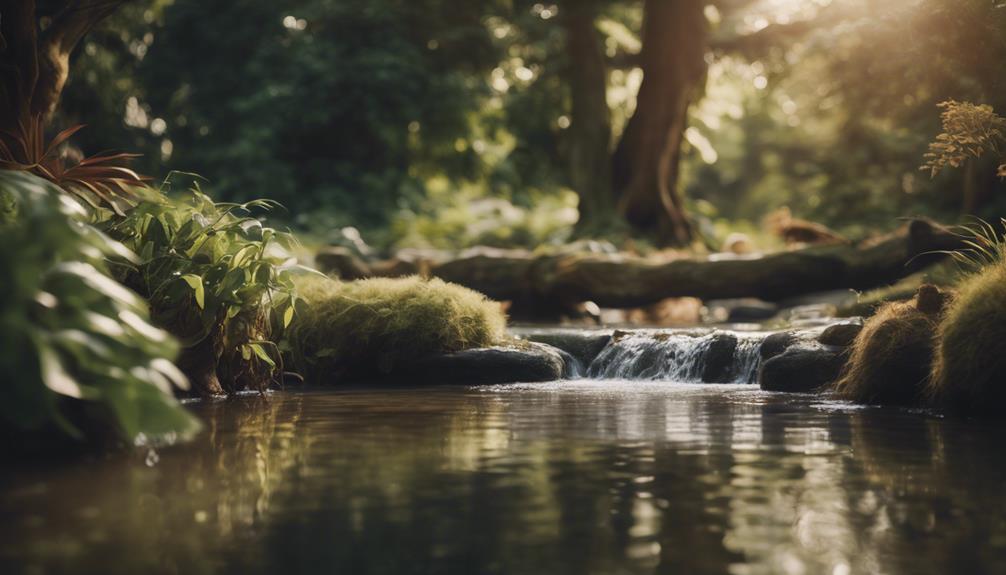
Alfresco in art, a technique from the Italian Renaissance, involves painting on fresh plaster. Artists like Michelangelo and Raphael utilized this method, creating everlasting pieces by bonding pigments with plaster. This style demands a grasp of the plaster's drying process to guarantee durability. Pigments are directly applied to wet surfaces, becoming permanent parts of walls or ceilings. To discover more about the history, notable artists, preservation methods, contemporary applications, and impact of alfresco art, explore further for an enriched understanding of this timeless artistic style.
Key Takeaways
- Alfresco art involves painting on fresh plaster.
- Originated in the Italian Renaissance.
- Artists like Michelangelo and Raphael were influential.
- Pigments applied directly on wet plaster for durability.
- Contemporary alfresco art blends creativity with activism.
Origins of Alfresco Painting
Exploring the origins of alfresco painting reveals a rich history rooted in the Italian Renaissance and the mastery of artists like Michelangelo and Raphael. The technique of painting on fresh plaster, known as alfresco painting, has a long tradition dating back to this influential period in art history. While the practice flourished in Italy, its influence spread globally, with notable examples of alfresco painting found in various locations, including New York.
In New York, alfresco painting has left its mark on numerous architectural gems, showcasing the durability and timeless beauty of this technique. The term 'alfresco' may be commonly associated with outdoor dining, but in the world of art, it signifies a meticulous process where pigments are integrated into wet plaster, ensuring lasting and vibrant artwork.
Artists like Michelangelo and Raphael exemplified the artistry and precision required for alfresco painting, leaving behind iconic frescoes that continue to captivate audiences worldwide. The legacy of alfresco painting in New York and beyond stands as a confirmation to the enduring allure of this timeless artistic practice.
Technique and Execution

Mastering the technique of alfresco painting involves precise timing and skill to integrate pigments into wet plaster effectively. This method, known as true fresco or buon fresco in the Fine Arts, demands a deep understanding of the drying process of plaster.
Artists like Michelangelo and Raphael excelled in this technique, creating timeless frescoes that have endured through centuries. The bond formed between the pigment and the plaster during the painting process guarantees the durability and longevity of alfresco artworks.
Characteristics of Alfresco Style

The distinctive characteristic of alfresco style in art lies in its direct application of pigments onto wet plaster surfaces. This method allows the pigments, when mixed with water and applied to the wet plaster, to become a permanent part of the wall or ceiling as they dry and bind with the surface.
Artists working in the alfresco style often find inspiration in the natural environment, as the technique lends itself well to depicting scenes from nature on a grand scale. From ancient civilizations like the Romans to renowned artists of the Renaissance such as Michelangelo, alfresco painting has a rich history spanning various cultures.
Due to the need to work swiftly before the plaster dries, artists must possess skill and precision to execute their designs effectively. The resulting artworks aren't only visually striking but also incredibly durable, as the pigments chemically bond with the plaster surface, ensuring longevity and resilience against the elements.
Notable Artists and Works
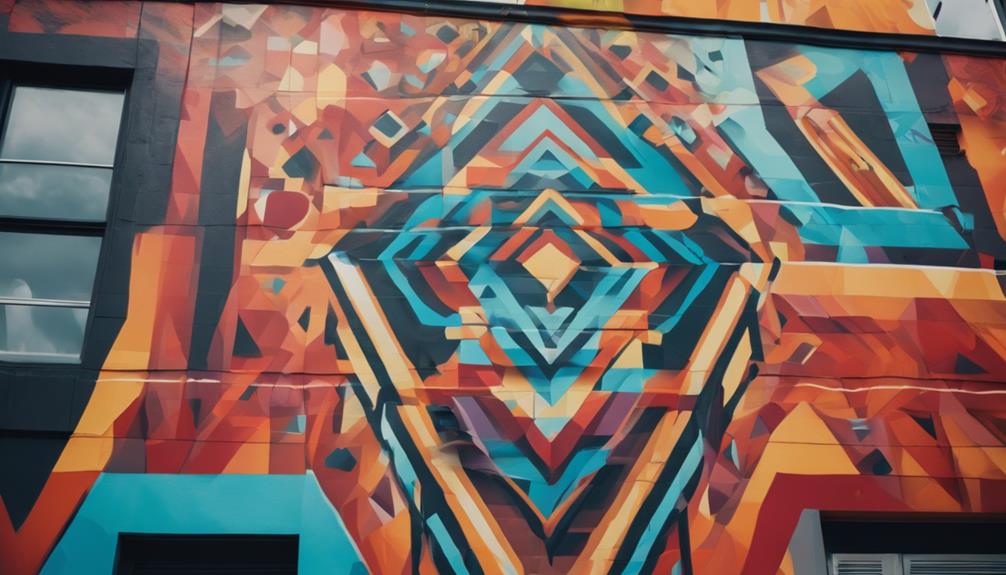
Alfresco art has attracted numerous notable artists, each contributing unique perspectives and techniques to the style.
From Camille Corot's 'The Four Times of Day' series to John Constable's 'The Hay Wain,' these works showcase the beauty and spontaneity of outdoor painting.
Exploring artists' influences, symbolism in art, and diverse techniques and styles, we unravel the rich tapestry of alfresco artistry.
Artists' Influences
Prominent artists, such as John Constable and Camille Corot, drew inspiration from the plein air painting tradition, resulting in remarkable works that vividly captured the natural world. Constable's 'The Hay Wain' and Corot's 'Ville d'Avray' are exemplary pieces showcasing their mastery of outdoor scenes.
Embracing the practice of painting en plein air, these artists, alongside J.M.W. Turner and Paul Cézanne, shifted artistic approaches. Constable's landscapes, like 'The Hay Wain,' focus on conveying nature's beauty authentically. Corot's 'The Bridge at Narni' exemplifies his ability to infuse tranquility and poetic atmosphere into outdoor sketches. Their works reflect the influence of the plein air tradition, emphasizing depth and atmosphere.
The outdoor scenes they painted, dans la nature, reveal a deep connection to the natural world and a desire to capture its essence. These artists' influences have left a lasting impact on the art world, inspiring generations to explore the beauty of nature through their works.
Symbolism in Art
Exploring the domain of art beyond capturing nature's beauty, we now investigate the rich world of symbolism in art, where artists convey deeper meanings through symbols, motifs, and imagery. Symbolism in art allows for the expression of complex ideas, emotions, and societal critiques through visual metaphors and hidden meanings. Notable artists like Gustav Klimt and the Pre-Raphaelite Brotherhood have utilized symbolism to provoke thought and evoke emotions in their works. For instance, Klimt's painting 'The Kiss' is renowned for its rich symbolism, while the Pre-Raphaelite Brotherhood, including Dante Gabriel Rossetti, drew inspiration from literature, mythology, and nature to create symbolic artworks.
| Artist | Notable Work | Symbolism |
|---|---|---|
| Gustav Klimt | 'The Kiss' | Allegorical elements provoke thought and emotions. |
| Pre-Raphaelite Brotherhood | Various works | Inspired by literature, mythology, and nature to convey deeper meanings. |
| Edvard Munch | 'The Scream' | Represents anxiety, existential dread, and the human condition. |
Techniques and Styles
What techniques and styles distinguish notable artists like Michelangelo and Raphael in their iconic alfresco works?
Fresco techniques, particularly in the hands of masters like Michelangelo and Raphael, showcase a mastery of painting on fresh plaster. These artists utilized the demanding medium of alfresco to create enduring masterpieces, such as Michelangelo's breathtaking frescoes on the ceiling of the Sistine Chapel and Raphael's intricate works in the Vatican Palace.
The quick-drying nature of plaster in fresco painting necessitates precision and efficiency, traits evident in the intricate details and vibrant colors of these iconic works.
The term 'alfresco' itself, derived from Italian, emphasizes the outdoor connection of this style, though many alfresco works are found indoors. The durability and vividness achieved through fresco techniques make it a preferred method for creating lasting wall paintings in architectural settings.
Through their skilled execution and innovative approaches to fresco painting, Michelangelo and Raphael have cemented their places in art history as masters of the alfresco style.
Preservation and Conservation Methods
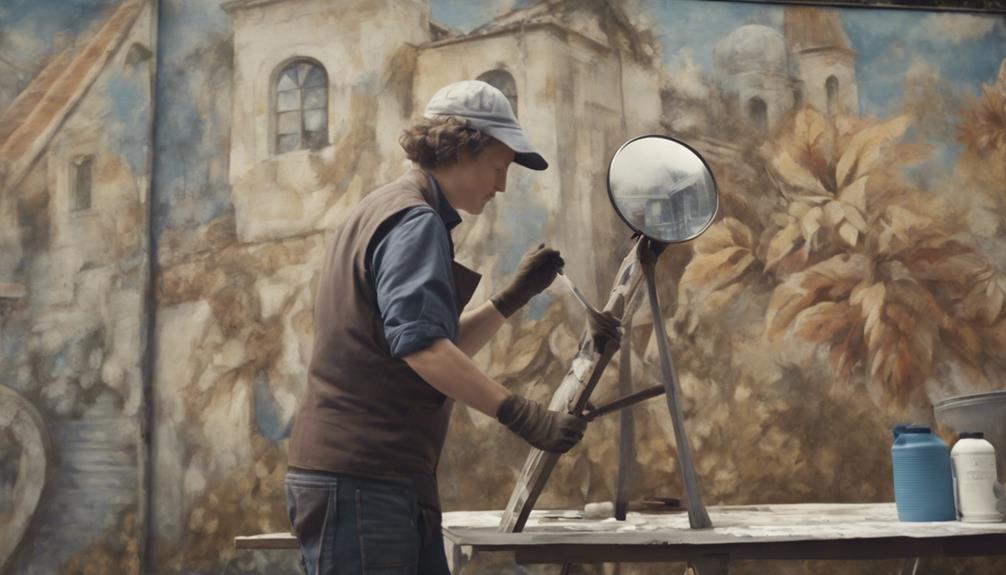
To safeguard alfresco art from environmental hazards, we employ preservation and conservation methods aimed at maintaining the integrity of outdoor murals and frescoes.
Preservation techniques for works like the famous mural 'Dream of a Sunday Afternoon in the Alameda Central' by Diego Rivera de la Rivera involve regular cleaning and monitoring for damage caused by weather and pollution. Conservation experts carefully repair any existing issues, such as cracks or flaking paint, using specialized tools and materials.
Protective coatings are applied to prevent fading and erosion, ensuring the longevity of these outdoor artworks. Additionally, climate control systems near alfresco pieces help regulate temperature and humidity levels to further protect them.
Collaboration among conservators, art historians, and scientists is essential for developing and implementing effective preservation strategies tailored to the unique challenges faced by alfresco art, preserving these cultural treasures for future generations.
Contemporary Applications and Influence

Contemporary alfresco art has become increasingly prevalent in urban environments, with artists utilizing public spaces as their canvas. This style of art, with its roots in street art and murals, has evolved to incorporate social commentary, cultural references, and vibrant colors that engage viewers on a profound level.
Artists like Banksy and Shepard Fairey have played significant roles in shaping the alfresco art movement, blending creativity with activism and leaving a lasting impact on the art world.
Alfresco art installations can often be completed within two hours, allowing artists to work quickly and spontaneously. Public art festivals frequently feature alfresco pieces, showcasing the talent and creativity of artists from around the world.
Alfresco murals have been used to revitalize neighborhoods, turning once dull spaces into vibrant cultural hubs. The influence of contemporary alfresco art can be seen in mainstream fashion, advertising, and design, reflecting its growing popularity and relevance in modern society.
Frequently Asked Questions
What Does Al Fresco Mean in Art?
Al fresco in art means painting outdoors to capture scenes in natural light. Artists work swiftly to depict the essence before light changes. Originating from Italian, it emphasizes working in fresh air for authenticity and immediacy.
What Is Fresco Style in Art?
We paint on wet plaster, merging colors permanently. Masters like Michelangelo excelled in this technique, dividing sections to complete intricate narratives. Our art speaks through vibrant hues, intertwining religion, myths, and stories.
What Is an Example of a Fresco Art?
An example of a fresco art is the Sistine Chapel ceiling painted by Michelangelo. It showcases intricate biblical scenes with stunning detail and craftsmanship. The emotional depth in Giotto's frescoes in the Scrovegni Chapel also stands out.
What Best Describes What Fresco Is?
Fresco is like a vibrant mural on fresh plaster, capturing art's essence. We brush pigments on wet surfaces for buon fresco or dry ones for a secco. Ancient civilizations treasured these masterpieces.
Conclusion
As we journey through the world of art, we find the alfresco style to be like a refreshing breeze on a warm summer day. Its origins rooted in history, techniques executed with precision, and characteristics that paint a vivid picture in our minds.
Like a gentle zephyr that whispers tales of the past, alfresco painting continues to influence and inspire contemporary artists today. Let's embrace this style with open arms, preserving its beauty for generations to come.
- About the Author
- Latest Posts
Introducing Ron, the home decor aficionado at ByRetreat, whose passion for creating beautiful and inviting spaces is at the heart of his work. With his deep knowledge of home decor and his innate sense of style, Ron brings a wealth of expertise and a keen eye for detail to the ByRetreat team.
Ron’s love for home decor goes beyond aesthetics; he understands that our surroundings play a significant role in our overall well-being and productivity. With this in mind, Ron is dedicated to transforming remote workspaces into havens of comfort, functionality, and beauty.
Alfresco
What Does Non Alfresco Mean? Learn the Terminology!
Keen to uncover the distinction between alfresco and non alfresco spaces? Discover the unique ambiance and comfort of indoor settings in this insightful exploration.
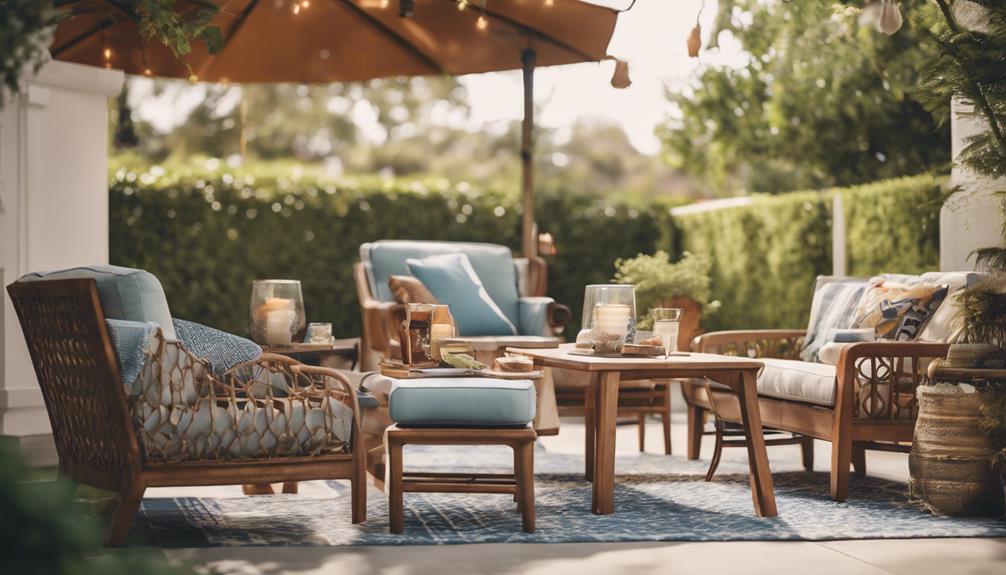
When we talk about 'non alfresco,' we're referring to indoor spaces and activities. These settings offer controlled environments distinct from the outdoors. Understanding this term helps distinguish between indoor and outdoor experiences. Non alfresco spaces provide comfort, convenience, and a unique ambiance that differs from outdoor areas. Think of indoor locations like restaurants, offices, and homes. There's more to discover about the nuances between alfresco and non alfresco environments.
Key Takeaways
- Non alfresco refers to indoor activities, contrasting with outdoor settings.
- Indoor locations offer controlled climate, ambiance, and distinct benefits.
- Understanding non alfresco aids in planning events and creating suitable environments.
- Non alfresco spaces prioritize comfort, convenience, and a unique atmosphere.
- These environments differ from outdoor spaces in characteristics and benefits.
Definition of Non Alfresco
In our exploration of non alfresco terminology, let's begin with a clear definition of what 'non alfresco' signifies. The Word of the Day, 'non alfresco,' refers to indoor activities or settings, contrasting with outdoor spaces.
When we talk about non alfresco environments, we're referring to places like homes, offices, restaurants, theaters, and other indoor locations. These settings offer a controlled climate, protection from the elements, and a distinct ambiance different from outdoor spaces.
Understanding the concept of non alfresco is essential for distinguishing between indoor and outdoor experiences. By recognizing this distinction, we can better appreciate the unique characteristics and benefits that each type of environment provides.
Whether it's enjoying a cozy evening at home, being productive in an office setting, or savoring a meal at a restaurant, non alfresco spaces offer comfort, convenience, and a different kind of atmosphere compared to the great outdoors.
Importance of Understanding Non Alfresco

Let's now highlight the significance of grasping the concept of non alfresco environments.
Understanding non alfresco is essential because it allows us to differentiate between indoor and outdoor activities or settings with clarity. By defining spaces that aren't in the fresh air or outdoors, we can better plan events or activities based on their location – whether they'll be held inside buildings or in enclosed areas.
This distinction between alfresco and non alfresco is particularly important when making decisions about ventilation, lighting, and the overall atmosphere of a space. Being aware of the term non alfresco helps us create suitable environments for various purposes, ensuring that the conditions are appropriate for the intended activities.
Examples of Non Alfresco Environments

Examples showcasing various non alfresco environments demonstrate the diverse range of indoor spaces that cater to different needs and preferences. Non alfresco settings include restaurants with indoor seating, office buildings, shopping malls, and homes with enclosed spaces. These environments are designed to be climate-controlled, shielding occupants from external elements like rain, wind, and extreme temperatures. People often choose non alfresco environments for reasons such as privacy, comfort, security, and protection from environmental factors.
In these indoor spaces, individuals can engage in various activities like work, dining, shopping, and relaxation within a controlled and sheltered setting. The appeal of non alfresco environments lies in their ability to offer a safe and regulated space for everyday tasks and leisure. Whether it's enjoying a meal without worrying about outdoor disturbances or working in a climate-controlled office, non alfresco environments cater to a wide range of needs and preferences.
Contrasting Alfresco and Non Alfresco
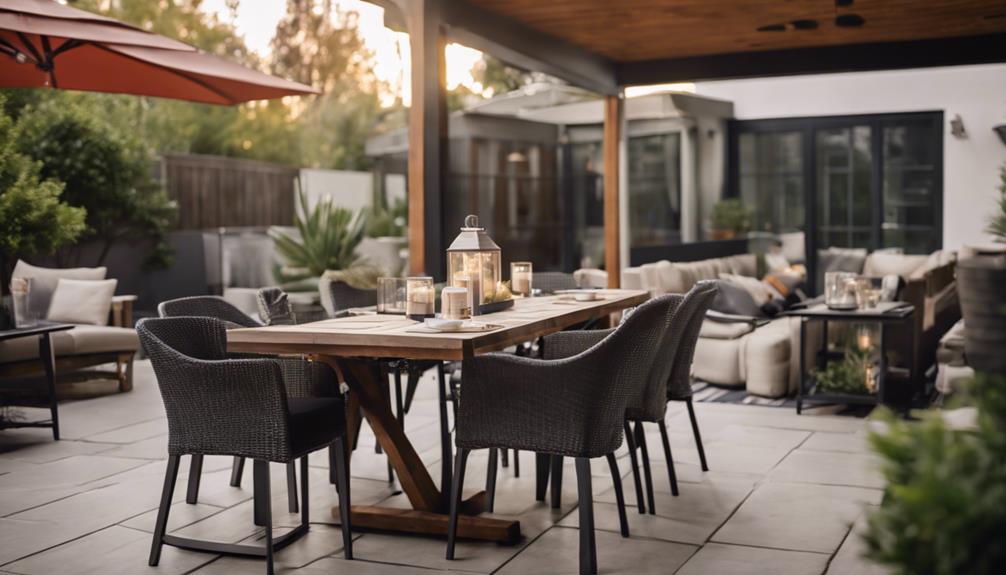
When comparing alfresco and non alfresco environments, one can observe distinct differences in their characteristics and settings. Alfresco settings are typically outdoors, offering a direct connection to nature, while non alfresco environments are enclosed or within buildings, providing controlled and sheltered conditions. The table below highlights some key differences between alfresco and non alfresco spaces:
| Alfresco Environments | Non Alfresco Environments |
|---|---|
| Open-air settings | Enclosed or indoor spaces |
| Exposed to outdoor elements | Shielded from weather |
| Connection to nature | Controlled surroundings |
Alfresco environments, such as outdoor dining areas or parks, offer a unique experience of being outdoors and in touch with nature. On the other hand, non alfresco settings like indoor dining establishments or conference rooms provide a sheltered and controlled environment, protecting individuals from external factors like weather conditions and noise pollution.
Non Alfresco in Different Contexts
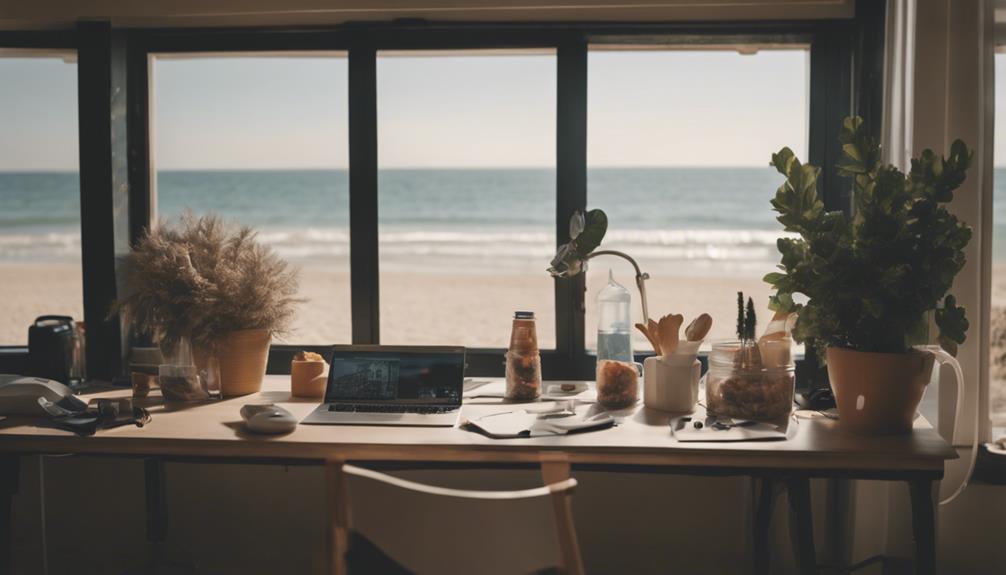
Non alfresco terminology encompasses a wide range of indoor activities and settings. From dining indoors at a cozy restaurant to conducting important meetings in conference rooms, the term applies to various indoor environments.
Recognizing the distinction between alfresco and non alfresco experiences can enhance our understanding of the different contexts in which these terms are used.
Non Alfresco Definition
In various contexts, the term non alfresco typically denotes indoor or enclosed environments or activities. When we refer to non alfresco dining, we are talking about enjoying meals inside a restaurant or home rather than outdoors. Similarly, non alfresco settings encompass places like offices, homes, or any enclosed structures where people spend their time. Additionally, non alfresco can extend to virtual interactions, such as meetings conducted online instead of face-to-face.
To provide a clearer understanding, let's explore a table that contrasts alfresco and non alfresco environments:
| Alfresco Activities | Non Alfresco Activities |
|---|---|
| Dining on a patio | Dining in a restaurant |
| Outdoor team building exercises | Indoor team meetings |
| Picnicking in a park | Working in an office |
| Camping in the wilderness | Attending virtual conferences |
Non Alfresco Applications
We explore diverse applications of non alfresco software solutions across various contexts. Non alfresco applications encompass a wide range of software solutions that don't fall under the Alfresco content management platform. These can include proprietary software, on-premise systems, or alternative content management platforms distinct from Alfresco.
In non alfresco environments, businesses may encounter different technologies, architectures, and integrations compared to those found in Alfresco-based setups.
Companies opt for non alfresco solutions based on specific needs, financial considerations, adherence to industry standards, or compatibility with existing infrastructure. Understanding the distinctions between alfresco and non alfresco applications is essential for organizations seeking to make informed decisions about selecting software that aligns best with their operational requirements.
Non Alfresco Benefits
Indoor environments offer distinct advantages over alfresco settings in various contexts, providing benefits such as privacy and climate control. Non alfresco options encompass a wide range of settings, from offices to homes, theaters, and more.
Choosing non alfresco for dining means enjoying meals inside restaurants rather than in outdoor spaces. Events and gatherings held in conference rooms or ballrooms fall under the non alfresco category, offering shelter from inclement weather and a controlled environment for various activities.
The benefits of non alfresco settings extend beyond just practical considerations, offering a different ambiance and level of intimacy compared to outdoor locations. In addition to privacy and climate control, indoor spaces provide opportunities for customization and tailored experiences.
Whether for work, leisure, or social gatherings, non alfresco environments present a versatile and adaptable option for a variety of activities and purposes.
Non Alfresco Vs. Indoor Settings
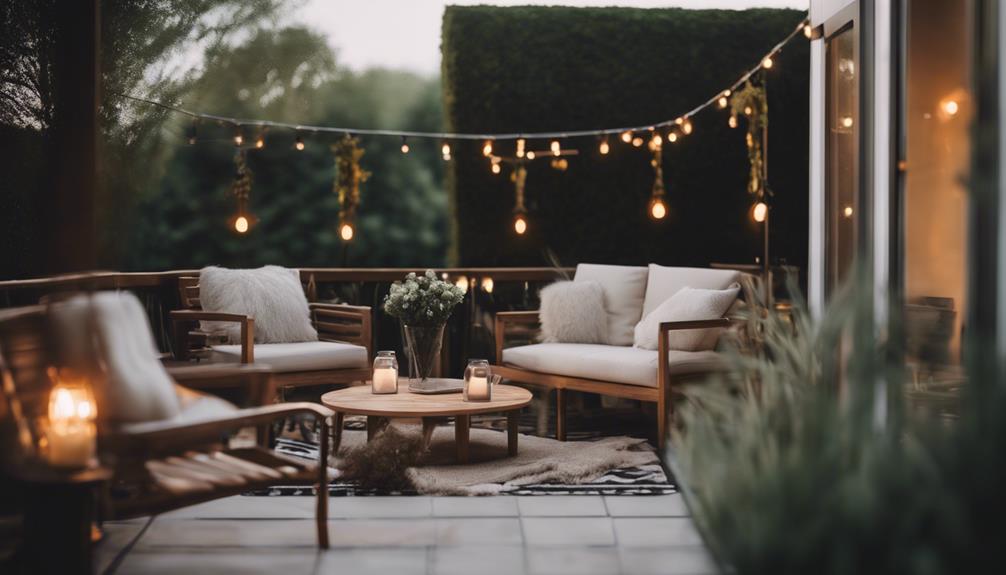
Non alfresco settings offer protection from the elements and are commonly found in various enclosed structures like buildings, homes, and offices. Indoor spaces shield individuals from external factors such as rain, wind, and extreme temperatures, providing a comfortable environment for various activities. These settings are prevalent in everyday places like restaurants, schools, and shopping malls, where controlled conditions enhance the experience.
Indoor environments boast amenities like controlled lighting, heating, and cooling systems, ensuring a pleasant atmosphere year-round. Such features contribute to the popularity of non alfresco spaces for activities requiring privacy, quietness, and specific conditions, such as work meetings, dining, and leisure pursuits. The versatility of indoor settings allows for a wide range of engagements to take place without being disrupted by external disturbances.
In contrast to alfresco settings, indoor spaces offer a controlled and sheltered environment, making them ideal for diverse social, professional, and personal interactions.
Non Alfresco Usage in Language

Moving from discussing non alfresco settings to exploring its usage in language, the term 'non alfresco' specifically denotes activities or environments that are situated indoors or away from the open air. When we refer to something as non alfresco, we are indicating that it is not taking place outside in the open. This distinction becomes essential in various contexts, from event planning to everyday conversations. To illustrate this further, consider the following table:
| Non Alfresco Usage in Language |
|---|
| Indoor dining |
| Meetings in closed spaces |
| Activities inside buildings |
| Office environments |
| Theaters |
Non Alfresco in Everyday Life
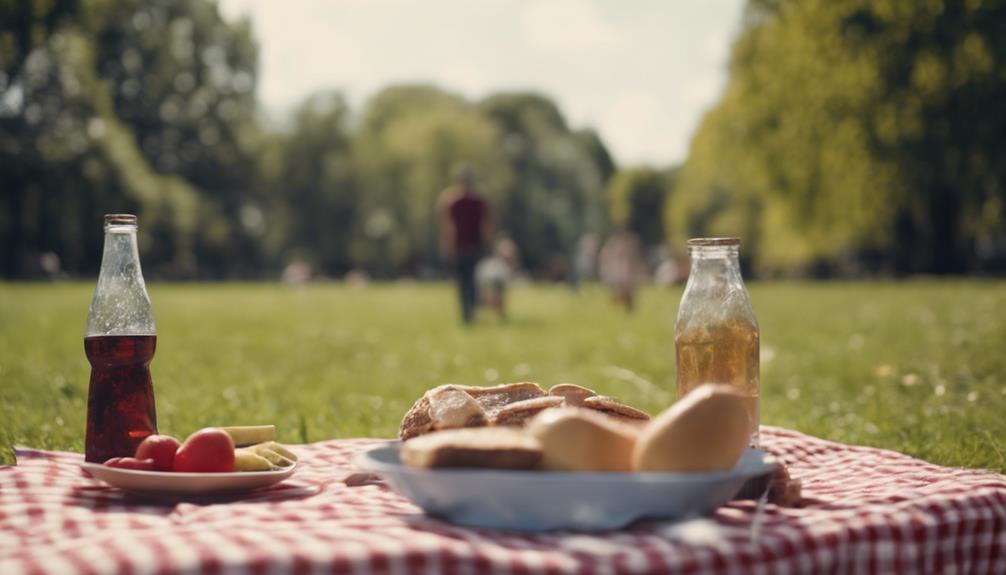
In our daily routines, we often find ourselves gravitating towards indoor spaces for various activities and interactions. Non alfresco settings play a significant role in our everyday lives, offering shelter from the elements and a controlled climate.
Whether it's dining at a cozy restaurant, working in an office, or socializing at home, these enclosed environments provide comfort and convenience.
Indoor spaces like restaurants, offices, and homes are examples of non alfresco settings where we spend a considerable amount of our time. Choosing non alfresco options allows us to prioritize comfort, privacy, and access to specific amenities that outdoor spaces may not always offer.
When opting for non alfresco activities, we're often seeking a retreat from the external environment, creating a space where we can engage in our daily tasks and interactions without the influence of outdoor factors. Indoor settings provide a sense of security and control that can enhance our overall experience in various aspects of life.
Non Alfresco in Event Planning
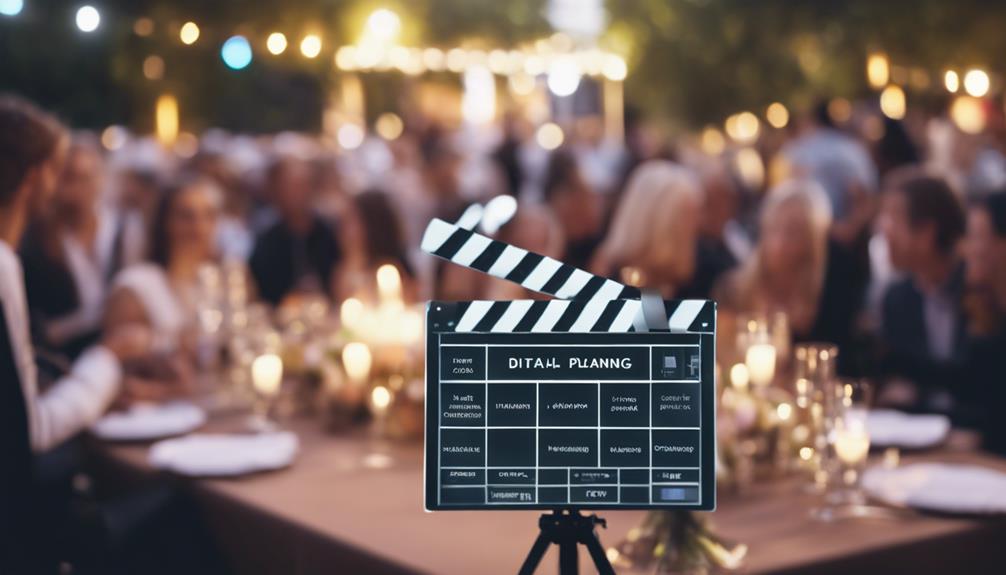
When considering non alfresco options in event planning, we're faced with a myriad of venue options outside, catering choices beyond the norm, and décor ideas that set the event apart. Indoor venues offer a level of predictability with weather and allow for greater control over the environment.
From conferences to weddings, non alfresco events provide a more controlled setting for a variety of gatherings and activities.
Venue Options Outside
Let's explore venue options outside the scope of alfresco settings in event planning. Non alfresco venues offer a range of possibilities for hosting events in enclosed or covered spaces. These indoor or sheltered locations provide protection from varying weather conditions, making them a practical choice for events regardless of the forecast.
Examples of non alfresco venues include banquet halls, conference centers, ballrooms, and other enclosed spaces that offer a controlled environment.
One of the key advantages of selecting a non alfresco venue is the availability of amenities such as heating, air conditioning, and proper lighting. These features contribute to creating a comfortable and inviting atmosphere for guests. Event planners often opt for non alfresco venues for formal occasions, large gatherings, or events where outdoor settings may not be feasible or suitable.
Considering the versatility and convenience they offer, non alfresco venues remain a popular choice in event planning.
Catering Choices Beyond
Our exploration of catering choices beyond alfresco settings in event planning reveals a myriad of options for indoor dining experiences. Non alfresco catering refers to indoor dining or event setups, offering a range of possibilities for hosting events regardless of the weather or climate conditions.
These choices, such as formal sit-down dinners, buffet-style meals, or cocktail receptions in enclosed spaces, provide flexibility and comfort for guests. Indoor venues create a controlled environment that guarantees food quality, proper temperature regulation, and overall guest satisfaction.
Event planners often consider both alfresco and non alfresco options to cater to diverse preferences and seasonal considerations. Whether it's a corporate banquet, a wedding reception, or a social gathering, the versatility of non alfresco catering allows for customized dining experiences that meet the needs of various events.
Décor Ideas Apart
Exploring indoor décor ideas distinct from alfresco settings enhances the ambiance and experience of non-alfresco events. When planning events held indoors, such as in ballrooms, conference centers, or private homes, the décor plays an essential role in setting the mood.
Non-alfresco décor focuses on creating enchanting atmospheres within enclosed spaces, utilizing elements like lighting, floral arrangements, table settings, and overall ambiance to craft a memorable experience for guests.
Event planners carefully consider factors such as venue size, event theme, and guest comfort when designing non-alfresco décor. By paying attention to these details, they make sure that the setting complements the overall event concept and enhances the guest experience.
Whether it's a corporate function, a wedding celebration, or a social gathering, the right décor can elevate the event and leave a lasting impression on attendees.
Exploring Non Alfresco Alternatives

Considering alternatives to alfresco experiences, we investigate exploring non alfresco options. Non alfresco settings refer to activities or environments that take place indoors rather than in the open air. These alternatives can encompass a wide range of options such as indoor dining establishments, virtual meeting spaces, or traditional office settings. Non alfresco environments offer controlled conditions like temperature, lighting, and privacy that may not be achievable outdoors.
They become particularly important in scenarios involving extreme weather conditions, security considerations, or the necessity for specialized equipment.
Understanding the concept of non alfresco is vital for individuals to make informed decisions about the most suitable setting for their activities or events. By recognizing the benefits of non alfresco options, one can adapt their plans to create a comfortable and secure environment that meets their specific needs. Whether it's seeking refuge from inclement weather or prioritizing privacy, exploring non alfresco alternatives presents a practical solution for various situations.
Frequently Asked Questions
What Does Not Alfresco Mean?
Not alfresco means activities or spaces conducted indoors, opposite of being outside. It distinguishes between enclosed areas like homes, offices, or theaters from outdoor settings. Understanding this term helps differentiate between indoor and outdoor experiences.
What Is the Meaning of the Word Alfresco?
Alfresco means dining or activities outdoors. It's commonly used to describe enjoying fresh air while eating or socializing. In Italian slang, it can also mean in prison. People may opt for alfresco settings for meals or work.
What Does Alfresco Mean in Slang?
Alfresco, in slang, conveys a sense of enjoying meals or activities outdoors, often in favorable weather. It contrasts with its Italian slang meaning of being in prison. Alfresco settings are commonly associated with dining or leisure.
What Is an Example of Alfresco?
When we think of alfresco, an example that comes to mind is enjoying a meal on a terrace. It's a lovely experience to dine outdoors, surrounded by nature. The fresh air adds a special touch to the meal.
Conclusion
To sum up, grasping the term 'non alfresco' is crucial for maneuvering through various environments and contexts.
Whether it's organizing events or simply describing a space, understanding the distinction between alfresco and non-alfresco can have a significant impact.
As the saying goes, 'knowledge is power,' and being acquainted with this terminology can assist you in communicating effectively and making informed decisions in a variety of situations.
- About the Author
- Latest Posts
Introducing Ron, the home decor aficionado at ByRetreat, whose passion for creating beautiful and inviting spaces is at the heart of his work. With his deep knowledge of home decor and his innate sense of style, Ron brings a wealth of expertise and a keen eye for detail to the ByRetreat team.
Ron’s love for home decor goes beyond aesthetics; he understands that our surroundings play a significant role in our overall well-being and productivity. With this in mind, Ron is dedicated to transforming remote workspaces into havens of comfort, functionality, and beauty.
Alfresco
What Does Alfresco Life Mean? Explore the Lifestyle!
Hear about the enchanting world of alfresco living, where nature, relaxation, and social connections come together for a blissful outdoor experience.
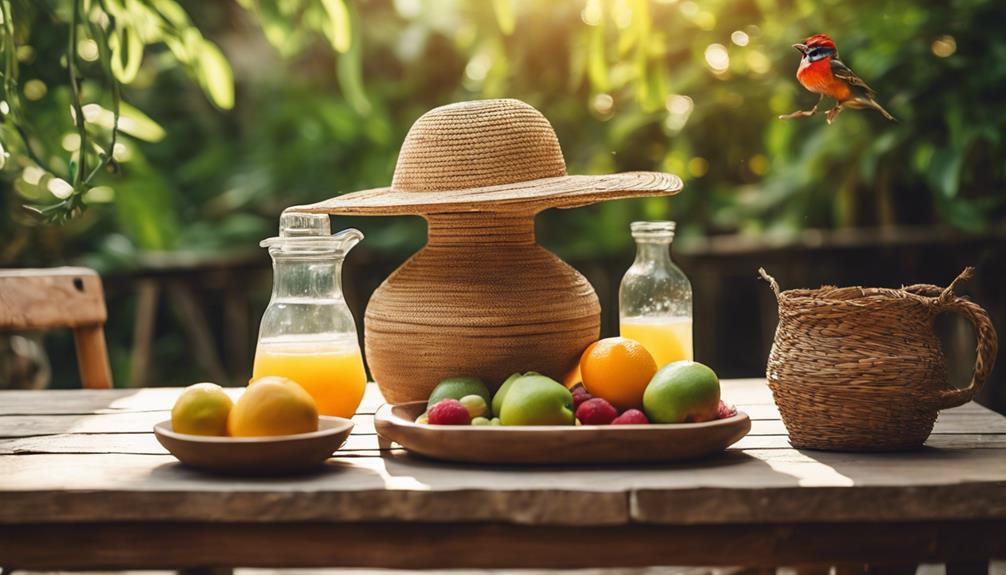
Immersing in alfresco life means embracing outdoor living for relaxation and social connections amidst nature's beauty. Benefits include mood enhancement, stress reduction, and healthy sunlight exposure, fostering joy and well-being. Design outdoor spaces with quality materials like teak and wicker, creating inviting areas for relaxation and entertainment that complement indoor rooms. Incorporate soft lighting, greenery, and comfy furniture to craft a serene ambiance. Host gatherings outdoors for enhanced dining experiences and a casual atmosphere. Alfresco living offers fresh air, ambiance, and cost savings, making it a delightful choice for special occasions. Explore more about this lifestyle to discover its charm and benefits.
Key Takeaways
- Alfresco life is about enjoying outdoor living.
- It involves embracing nature for relaxation and socializing.
- Alfresco living enhances well-being through sunlight and fresh air.
- Quality outdoor furniture and decor elevate alfresco experiences.
- Hosting gatherings outdoors offers unique dining and social opportunities.
Benefits of Alfresco Living
Let's explore the perks of alfresco living and how it elevates our overall well-being. Spending more time outside in an alfresco living setting can have numerous benefits for our health and happiness. Having access to an outdoor space where we can relax, dine, or socialize allows us to enjoy the beauty of nature and breathe in fresh air, which can boost our mood and mental well-being.
Alfresco living encourages us to step away from the hustle and bustle of indoor life, providing a calming environment to unwind and destress. Moreover, being in an alfresco setting often leads to increased social interactions and connections with others. Whether it's hosting a barbecue with friends or simply enjoying a quiet evening with family, outdoor living spaces create opportunities for meaningful relationships to flourish.
Additionally, alfresco living promotes a healthy lifestyle by offering chances to soak up sunlight and vitamin D, essential for our overall well-being. By embracing alfresco living, we can enhance our quality of life and find joy in the simple pleasures of outdoor living.
Designing Outdoor Spaces
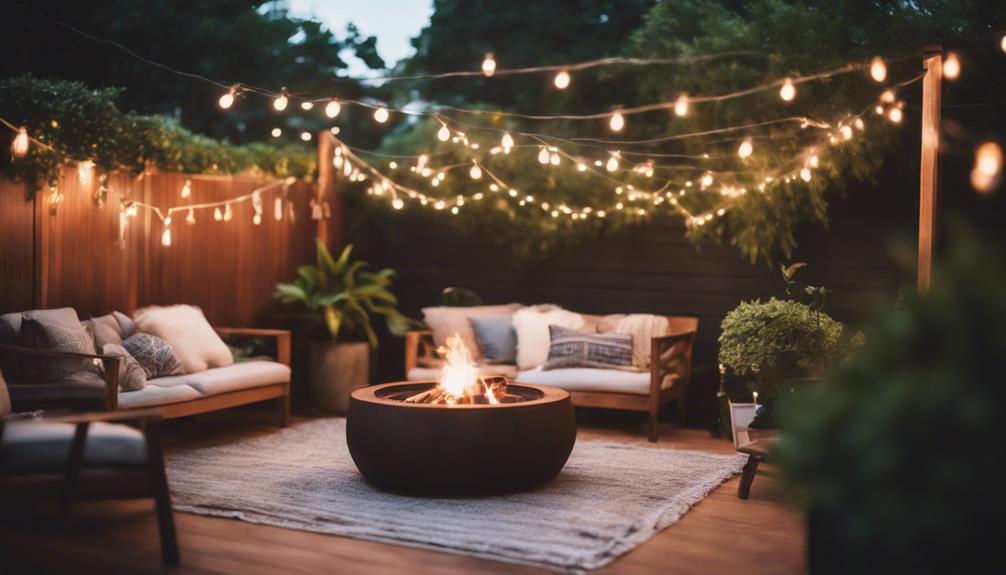
When designing outdoor spaces, our focus is on selecting high-quality, durable furniture to guarantee comfort and longevity. Choosing materials like teak and wicker for outdoor furniture assures that our outdoor areas aren't only stylish but also stand the test of time.
By investing in comfy seating and elegant dining furniture, we can create a space where we can spend time relaxing and entertaining guests under the open sky.
To achieve a cohesive look, we aim to design our outdoor spaces in a way that complements our indoor rooms, providing a smooth connection and a fresh, pulled-together feel. It's crucial to mix cushions in various colors and textures to add a touch of style while making sure that each outdoor sofa has a nearby coffee table for convenience.
Accessorizing our outdoor spaces with items like lanterns, bamboo torches, flowers, and herbs helps blend style with functionality and adds a personalized touch to our alfresco living experience.
Creating a Relaxing Ambiance

To enhance the outdoor experience, we focus on creating a relaxing ambiance through thoughtful design elements. Incorporating soft outdoor lighting such as string lights or lanterns can instantly transform your outdoor space into a cozy atmosphere, perfect for unwinding after a long day.
Adding outdoor rugs and cushions not only provides comfort but also brings warmth to the outdoors, making it a welcoming retreat. Greenery and potted plants are essential for infusing a touch of nature and freshness into your alfresco area, creating a serene environment.
Consider installing a fire pit or outdoor fireplace to not only provide warmth during cooler evenings but also enhance the overall ambiance with a flickering glow. Playing soothing background music further elevates the relaxing ambiance, helping you fully immerse yourself in the tranquility of your alfresco living space.
Importance of Outdoor Furniture

Exploring the alfresco lifestyle involves recognizing the significance of outdoor furniture in shaping comfortable and inviting outdoor spaces. Outdoor furniture, such as tables, chairs, sofas, and loungers, plays an essential role in creating a functional and aesthetically pleasing alfresco setting.
Quality outdoor furniture is vital for ensuring comfort, durability, and the overall ambiance of your outdoor living area. From sun shelters to garden benches, the right outdoor furniture pieces can elevate the alfresco experience and make your outdoor space more welcoming.
Investing in high-quality outdoor furniture is key to enhancing your alfresco lifestyle and making the most of your outdoor experiences. Whether you're hosting gatherings with friends and family or simply enjoying a peaceful moment outdoors, having the right outdoor furniture can make a significant difference.
Keep an eye out for sales on outdoor furniture to find affordable options for upgrading your outdoor living space without breaking the bank.
Enhancing With Lighting Elements

Enhancing alfresco living spaces with carefully selected lighting elements creates an enchanting ambiance that extends the usability of outdoor areas well into the evening. When we contemplate the time we spend outdoors, having the right lighting can truly transform the experience. From hanging lanterns casting a warm glow to modern LEDs offering a sleek and contemporary feel, the options are vast. It's crucial to ponder how different lighting choices can make us feel – whether it's creating a peaceful retreat for unwinding after a long day or setting the stage for social gatherings after dark.
Here is a table to help you ponder the various lighting elements you can incorporate into your alfresco living space:
| Lighting Option | Description |
|---|---|
| Hanging Lanterns | Offers a warm and cozy glow |
| Modern LEDs | Provides a sleek, contemporary feel |
| String Lights | Adds a whimsical touch |
| Solar-Powered Lights | Eco-friendly and energy-efficient |
| Spotlights | Highlights key features in the garden |
Incorporating Greenery and Plants

When designing alfresco spaces, consider the placement of plants to maximize their benefits.
Greenery not only enhances the aesthetic appeal but also contributes to improved air quality.
Understanding the benefits of incorporating plants can help create a more vibrant and healthy outdoor living environment.
Plant Placement Tips
Let's strategically position plants to elevate the visual appeal of our outdoor space. Greenery plays an important role in enhancing the ambiance of our surroundings.
When deciding on plant placement, it's vital to take into account factors such as sunlight requirements, privacy needs, and maintenance ease. To create a harmonious outdoor space, place plants strategically to provide shade or privacy in specific areas.
Utilize hanging baskets or vertical planters to maximize space utilization and add a sense of depth to your greenery arrangement.
Grouping plants with similar watering needs together can simplify maintenance routines, making it easier to care for your outdoor oasis.
By carefully planning the placement of plants, you can create a cohesive and visually appealing outdoor environment that complements your alfresco lifestyle.
Benefits of Greenery
Incorporating greenery and plants into our alfresco living spaces offers a multitude of benefits that enrich our outdoor experience. Greenery not only enhances the aesthetic appeal of our outdoor areas but also plays an essential role in improving air quality by reducing carbon dioxide levels and increasing oxygen production. This natural touch creates a tranquil environment ideal for relaxation and social gatherings, allowing us to fully embrace the alfresco lifestyle.
Moreover, certain plants like lavender and mint serve a dual purpose by naturally repelling insects, making our alfresco living more enjoyable and comfortable. Additionally, greenery can act as natural barriers or screens, providing privacy and creating a sense of seclusion and tranquility in our outdoor spaces.
Hosting Alfresco Gatherings

Hosting alfresco gatherings enhances our dining experiences by allowing us to enjoy meals, drinks, and socializing in outdoor settings. The myriad benefits of spending more time outdoors include creating a psychological and emotional connection with nature while enjoying the company of friends and family. Alfresco gatherings provide a unique opportunity to relax in a casual atmosphere and entertain guests in a refreshing outdoor setting. From backyard BBQs to elegant garden parties, hosting gatherings outdoors adds a touch of charm to any event.
| Benefits of Hosting Alfresco Gatherings |
|---|
| Enhanced dining experiences |
| Relaxed and casual atmosphere |
| Opportunity to connect with nature |
Frequently Asked Questions
What Is Alfresco Lifestyle?
Living an alfresco lifestyle means embracing nature and fresh air, enjoying meals and socializing outdoors. It promotes well-being and a connection with the environment. Outdoor furniture and lighting are essential for creating a comfortable alfresco experience.
What Does an Alfresco Mean?
Alfresco means enjoying the outdoors, often in a garden or patio setting. It's Italian for 'in the fresh air.' We relish the irony that alfresco living connects us with nature while we sip our coffee indoors.
What Does Alfresco Mean in Slang?
In slang, 'alfresco' means dining or eating outdoors. It's about enjoying meals in the open air, often in a relaxed setting. It's a casual and pleasant way to savor food and nature simultaneously.
What Is the Concept of Al Fresco?
The concept of al fresco focuses on enjoying outdoor spaces for dining, relaxation, and socializing. It emphasizes connecting with nature and reaping the benefits of spending time outside. We love embracing this lifestyle!
Conclusion
To sum up, alfresco living offers a unique and revitalizing experience that allows individuals to connect with nature and enjoy the outdoors. It's like a revitalizing breeze, rejuvenating and invigorating.
By creating well-designed outdoor spaces, incorporating comfortable furniture, and adding the right lighting and greenery, individuals can truly embrace the alfresco lifestyle.
So, why not step outside and enjoy the beauty of alfresco living?
- About the Author
- Latest Posts
Introducing Ron, the home decor aficionado at ByRetreat, whose passion for creating beautiful and inviting spaces is at the heart of his work. With his deep knowledge of home decor and his innate sense of style, Ron brings a wealth of expertise and a keen eye for detail to the ByRetreat team.
Ron’s love for home decor goes beyond aesthetics; he understands that our surroundings play a significant role in our overall well-being and productivity. With this in mind, Ron is dedicated to transforming remote workspaces into havens of comfort, functionality, and beauty.
-

 Vetted2 weeks ago
Vetted2 weeks ago15 Best Leather Restorer Products to Revive Your Furniture and Accessories
-

 Vetted2 weeks ago
Vetted2 weeks ago15 Best Contact Paper for Kitchen Cabinets to Elevate Your Home Decor
-

 Vetted3 weeks ago
Vetted3 weeks ago15 Best Leg Massagers to Relieve Tension and Improve Circulation – Ultimate Guide
-

 Vetted4 weeks ago
Vetted4 weeks ago14 Best Lawn Tractors of 2024 – Ultimate Guide for Your Yard Maintenance
-

 Vetted1 week ago
Vetted1 week ago15 Best Drain Snakes to Unclog Your Pipes Like a Pro
-

 Vetted4 weeks ago
Vetted4 weeks ago15 Best Commercial Backpack Vacuums for Efficient Cleaning Tasks
-
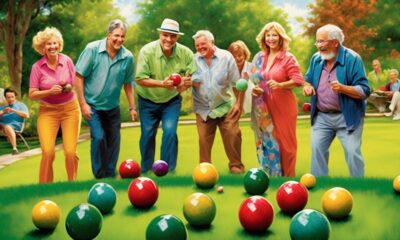
 Vetted3 weeks ago
Vetted3 weeks ago15 Best Lawn Games for Adults to Elevate Your Outdoor Gatherings
-

 Vetted4 weeks ago
Vetted4 weeks ago15 Best Group Games for Adults to Spice Up Your Next Gathering

















